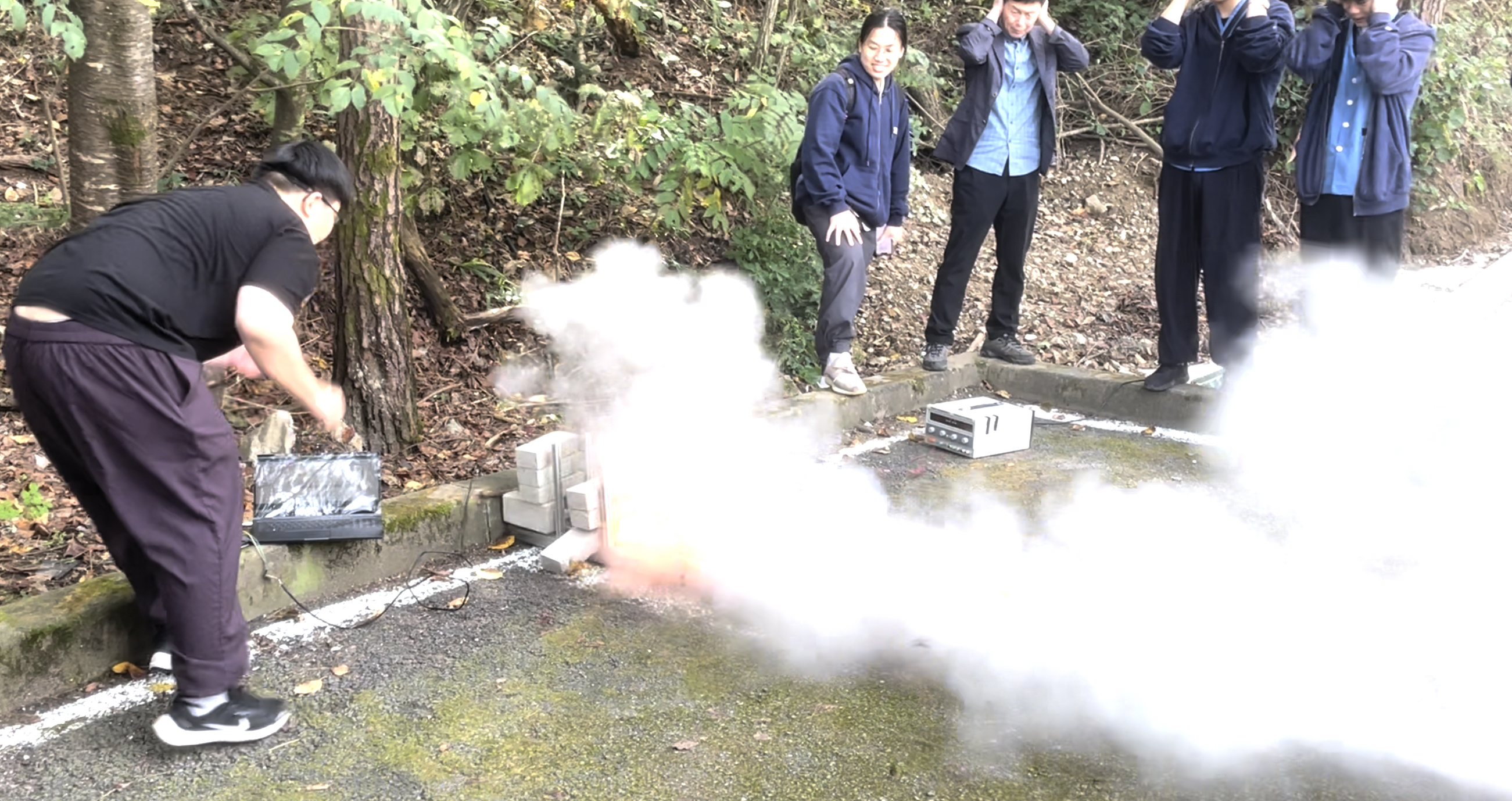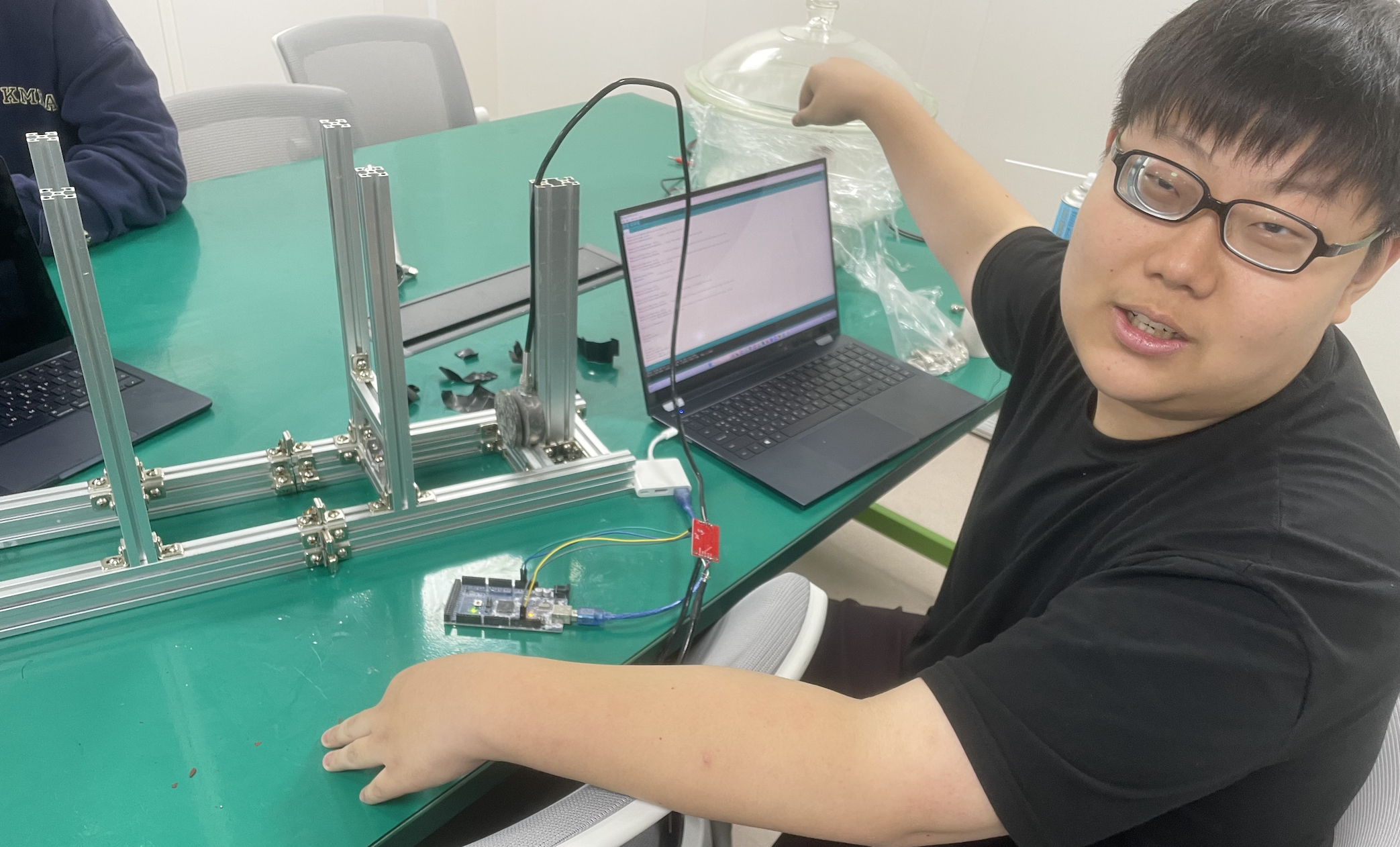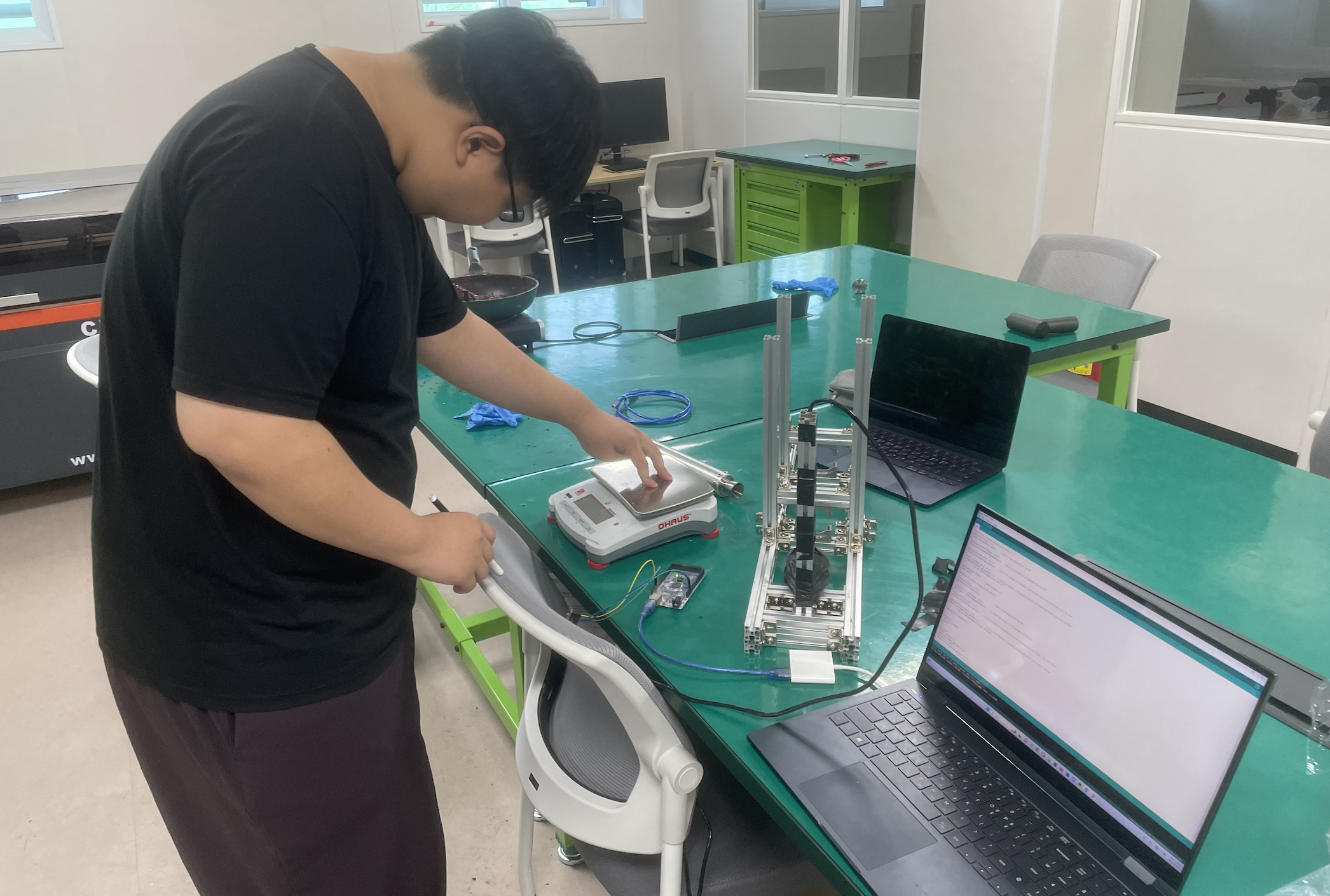Rocket Engine 2.0 & 4th Ignition Test
Fuel 2.0: Potassium Nitrate + Potassium Perchlorate + Sorbitol
In order to increase the thrust from Rocket Fuel 1.5, which produces about 400N thrust, we added potassium perchlorate and iron oxide, resulting in a fuel recipe of potassium nitrate (35%) + potassium perchlorate (30%) + sorbitol (30%) + iron oxide (4% / total 104%) for our 2nd Rocket Engine. “Silver Snoopy” rocket, BUZ’s first rocket that we are working on currently, will be equipped with the BUZ Rocket Engine 1.5, which produces 400 N of thrust, but the BUZ Rocket Engine 2.0, which is expected to produce around 900 N of thrust, will be used in future rockets that are aimed at higher altitudes.
Ignition Test
Our rocket engine’s nozzle hole goes directly into the solid fuel inside the engine, so we just need to get the right amount of heat into the solid fuel section for the ignition. Before this experiment, the team has used long term-burning gunpowder from fireworks toys such as Sparklers, igniting it and manually inserting it into the nozzle of the engine. However, this method can lead to major accidents if the rocket ignites very quickly during the insertion process, so the team introduced a remote ignition system from this engine ignition experiment.
For the remote ignition, we used high-resistance nichrome wire, connected to a power supply to apply 30V, 2A of electricity, with its surface covered with a thin layer of Rocket Fuel 2.0.
This method does not require complex circuits and is cheap to produce. The igniter can be made from simple materials such as nichrome wire, bit of rocket fuel,, a high-voltage power supply, and a switch. Since the ignition time varies depending on the circuit length and circuit structure due to the difference in thermal conductivity, we built a total of 4 different ignitor circuits to find the most effective ignition structure with the shortest ignition time.
Results
The ignition experiment of the BUZ rocket engine 2.0 ended with the explosion of the rocket chamber. Unable to withstand the 850N thrust, the aluminum profile holding the load cell, which is the sensor that measures the thrust, bent, and the chamber split in half. Luckily, it didn't result in a major fire accident, but it did raise awareness of experimental safety. The chamber was set up to withstand much more than 850 N, but it exploded. So, we analyzed the cause of the explosion. There are two possible explanations of the explosion. One is that the chamber, which had already experienced 400N thrust tests, cracked under the accumulated stress. Secondly, the wire connected to the ignition was too thick for the size of the nozzle hole and momentarily blocked the nozzle hole, causing an instantaneous pressure surge in the chamber.






